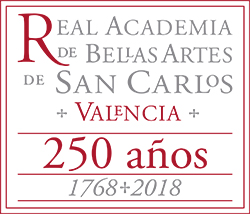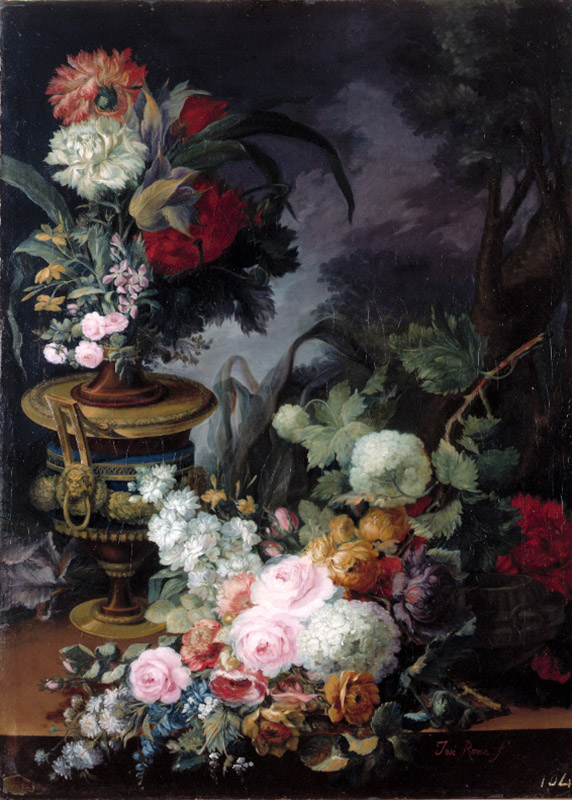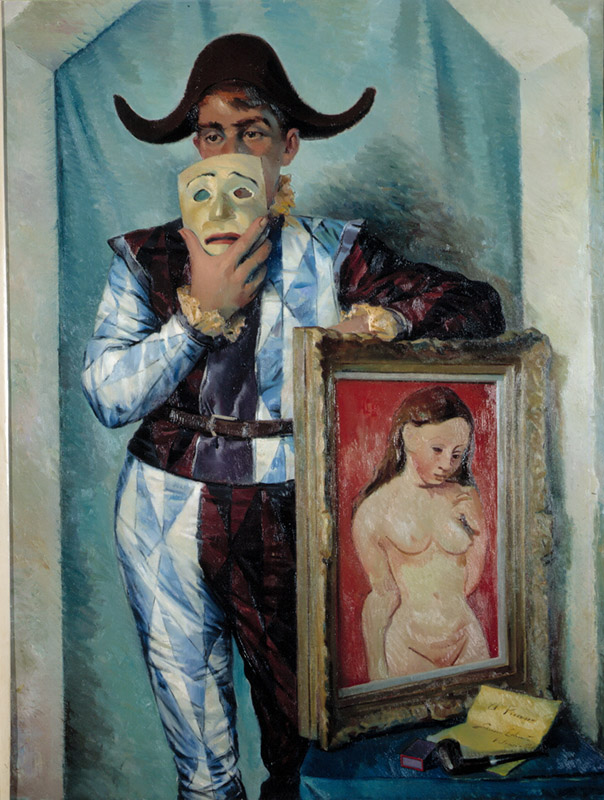HISTORIA DE LA REAL ACADEMIA DE BELLAS ARTES DE SAN CARLOS
Síntesis
El 14 de febrero de 1768 el rey Carlos III creaba en Valencia la Real Academia de Bellas Artes de San Carlos, institución académica, que desde su fundación, impartió las enseñanzas de las tres Nobles Artes: Pintura, Escultura y Arquitectura. Los estudios se organizaban bajo la denominación de menores y mayores. Los primeros eran denominados “Principios y Estampas” o “Primeros rudimentos” y los segundos constituían las especialidades de Pintura, Escultura, Arquitectura y Grabado.
En 1784 se añadió la enseñanza de “Dibujo de Flores y Ornatos aplicados a los tejidos”, debido a la importancia adquirida por la industria de la seda durante las últimas décadas del siglo XVIII.
En el período comprendido de 1768 a 1846, la Real Academia de San Carlos tuvo las facultades para expedir títulos de Arquitecto y de Maestro de Obras, estos últimos se prolongaron hasta 1870 y desde 1789 hasta 1860 ejercía además el control de los proyectos de arquitectura pública y religiosa, mediante su “Junta de Comisión de Arquitectura”, extendiéndose estas facultades a todo el ámbito de la geografía valenciana. De estos ejercicios dan fe más de 1000 imágenes conservadas entre los fondos de las colecciones de la Academia (planos, dibujos, diseños y proyectos de Arquitectura), además de las importantes colecciones de ilustraciones y de libros sobre “Tratados de Arquitectura”.
Aunque en 1868 el Estado suprimió todas las Escuelas de Bellas Artes, excepto la de Madrid, la Diputación Provincial confió a la Academia de San Carlos la dirección de los estudios superiores de Bellas Artes, renovada por el Ministerio de Instrucción Pública y Bellas Artes el 11 de septiembre de 1903. Sin embargo, por Decreto de 16 de febrero de 1932 el Patronato de la Escuela de Bellas Artes se disolvió y los estudios, finalmente, pasaron a depender del Ministerio de Educación, perdiendo la Academia todas las competencias en materia de docencia que durante más de un siglo de historia logró mantener hegemónicamente.
Desde su fundación la Academia ocupaba los espacios que el “Estudi General” de la Universidad de Valencia le había proporcionado y en 1850 se trasladó al desamortizado Convento del Carmen, en el que desde 1837 se venía configurando lo que más tarde sería el “Museo de Pinturas de Valencia”, con alrededor de 600 obras pertenecientes al Estado, que provenían de los conventos expropiados de Valencia y provincia, quedando bajo gestión y custodia de la Real Academia de San Carlos. Es en este lugar donde permanecerán unidos Academia, Museo y Escuela desde 1850 a 1946. La institución académica aportaba a ese conjunto, además, su propio patrimonio de obras artísticas formado desde 1768, con algo más de mil obras.
Ambas instituciones, Academia y Museo se trasladarán en 1946 al Palacio de San Pío V, donde desde entonces tienen su sede.
Actividad
En la actualidad la Academia de Bellas Artes es reconocida en la Ley de Patrimonio Cultural Valenciano como una Entidad Consultiva de la Generalitat Valenciana en materia de patrimonio cultural y colabora en el estricto cumplimiento de la legislación vigente, en materia de defensa, conservación y restauración de monumentos y bienes artísticos de la Comunidad Valenciana. Asimismo, facilita informes, dictámenes y asesoramiento a las autoridades, corporaciones públicas y órganos de la Administración Pública.
Desde el 1 de diciembre de 1987 la Academia está asociada al Instituto de España, manteniendo contactos con las restantes academias españolas, en particular con las de Bellas Artes.
La actividad de la Corporación se concreta en torno a tres funciones fundamentales: investigación, docencia y divulgación.
La primera de ellas, investigación, se concreta en:
- El archivo histórico y bibliotecas (histórica y contemporánea), orientados a investigadores, de acceso libre y consulta pública.
- La edición de la revista científica “Archivo de Arte Valenciano” publicada desde el año 1915 y el Anuario que la acompaña desde 2008, dedicado al puntual seguimiento de la propia vida de la Real Academia.
- La colección de trabajos científicos publicados en la “Col.lecció Investigació & Documents” e “Historia, Cultura y Patrimonio”.
- La convocatoria de premios: Premio Nacional de Pintura, ya en su 20ª edición y el Concurso Internacional de Composición Musical, 4ª edición.
En cuanto a la docencia, mantiene diversos convenios de colaboración con la Universitat de València, Universidad Politécnica de Valencia y la Universidad CEU Cardenal Herrera, lo que permite el desarrollo de prácticas formativas externas a los estudiantes universitarios en su seno y la concurrencia de numerosos investigadores.
Asimismo, organiza audiciones musicales, presentaciones de libros, conferencias y demás actividades sobre cultura valenciana, en un compromiso firme de divulgación del conocimiento con la sociedad.
Patrimonio
La Real Academia de Bellas Artes de San Carlos, durante sus 250 años de existencia, ha reunido un patrimonio artístico, compuesto por más de 15.400 obras artísticas, entre las que se hallan, pinturas, esculturas, dibujos, grabados, planos de arquitectura, medallas, fotografías, piezas arqueológicas, mobiliario, bajorrelieves y retablos. Estos fondos se encuentran depositados en el Museo de Bellas Artes de Valencia, en el IVAM, en la Facultad de Bellas Artes de San Carlos de la Universidad Politécnica de Valencia y recientemente en la Filmoteca de Valencia.
Departamentos importantes de la Academia son la Biblioteca, especializada en Bellas Artes, que contiene un importante fondo antiguo de libros impresos que corresponde a los siglos XVI al XIX, además del fondo contemporáneo; la Hemeroteca que reúne una importante colección de revistas de arte especializadas; y el Archivo Histórico, con una valiosa documentación que recoge la historia de la Institución desde el último tercio del siglo XVIII hasta la actualidad, que comprende documentos manuscritos, Libros de Actas, de Juntas, de Comisiones y de Estudios.
Sus Órganos de Gobierno son:
- La Junta de Gobierno
- La Junta General
La Real Academia de Bellas Artes de San Carlos ha sido reconocida con las siguientes distinciones provenientes de las instituciones y organismos valencianos:
- Medalla de Honor del Consell Valencià de Cultura
- Medalla al Mérito Cultural de la Generalitat Valenciana
- Medalla de la Universidad Politécnica de Valencia
- Medalla de Oro de la Ciudad del Ajuntament de València
Para el mantenimiento de sus actividades la Real Academia de Bellas Artes de Carlos recibe subvención de la Conselleria d´Educació, Cultura i Esport, Ajuntament de València i Diputació de València.
HISTORY OF THE SAN CARLOS ROYAL ACADEMY OF FINE ARTS, VALENCIA
Summary
On February 14th, 1768, King Carlos III created the Royal Academy of Fine Arts of San Carlos in Valencia. Such academic Institution, right since its foundation, taught the three Noble Arts: Painting, Sculpture and Architecture. The studies were organized under the denominations of minors and majors. The earlier were the so-called “Principles and Prints” or “First rudiments”, and the latter constituted the specialities of Painting, Sculpture, Architecture and Engraving.
In 1784 the subject of “Drawing of Flowers and Ornaments applied to fabrics” was added, due to the importance achieved by the silk industry during the last decades of the 19th Century.
Over the period between 1768 and 1846, the Royal Academy of San Carlos had the power to issue the qualifications of Architect and Master Builder, the latter lasted until 1870, and from 1789 to 1860 it used to control the projects of public and religious architecture, through its “Board of the Architecture Committee”. Such powers covered the entire field of the Valencia Region geography. Over 1000 images bear witness to these exercises, and they are preserved in the collections and holdings of the Academy (plans, drawings, designs and projects of Architecture), in addition to the outstanding collections of pictures and books on “Architectural Treatises”.
Although in 1868 the State suppressed all Fine Arts Schools, except the one of Madrid, the Diputación Provincial (provincial authority) of Valencia entrusted the Academy of San Carlos with the direction of the Higher Education studies in Fine Arts, renewed by the Ministry of Public Instruction and Fine Arts on September 11th., 1903. However, by Decree of February 16th 1932, the Board of Trustees of the School of Fine Arts was dissolved, and the studies finally came under the Ministry of Education, losing the Academy all competence in teaching that for more than a Century of history managed to maintain hegemonically.
Since its foundation, the Academy occupied the facilities made available by the “Estudi General” of the University of Valencia. In 1850 it was transferred to the disentitled Convent of Carmen, in which, since 1837, what would later be known as the “Painting Museum of Valencia” was taking shape over time, with around 600 State-owned works coming from the expropriated convents of Valencia city and its province. Those works remained under the management, custody and curation of the Royal Academy of San Carlos. It is in this place where the Academy, Museum and School remain united from 1850 to 1946. The academic Institution also contributed to this group its heritage of artistic works formed since 1768, with more than a thousand works.
Both institutions, the Academy and the Museum, were moved in 1946 to the Palace of San Pío V, where they have had their headquarters ever since.
Activity
At present, the Academy of Fine Arts is recognized in the Valencian Cultural Heritage Law as a Consultative Entity of the Generalitat Valenciana in matters of cultural heritage. It collaborates in strict compliance with current legislation on the defence, conservation and restoration of monuments and artistic assets of the Valencian Community. It also provides reports, opinions and advice to authorities, public corporations and public administration bodies.
Since December 1st 1987 the Academy has been associated with the Institute of Spain, maintaining contacts with the other Spanish academies, in particular with those of Fine Arts.
The Corporation’s activity is focused on three fundamental functions: research, teaching and dissemination.
The first of these, research, takes the form of:
- The historical archive and libraries (historical and contemporary), freely accessible for researchers and public consultation.
- The publishing of the scientific magazine “Archivo de Arte Valenciano” published since 1915 and the Yearbook that accompanies it since 2008, dedicated to the regular monitoring of the life of the Royal Academy.
- The collection of published scientific works in the “Col.lecció Investigació & Documents” and “History, Culture and Heritage”.
The call for the following Awards: National Painting Prize, now in its 20th edition and the International Musical Composition Competition, 4th edition.
As far as teaching is concerned, it has several collaboration agreements with the University of Valencia, the Polytechnic University of Valencia and the Cardenal Herrera CEU University, which allows for the development of external training practices for university students and the concurrence of numerous researchers.
It also organizes musical auditions, book presentations, conferences and other activities on Valencian culture, in a firm commitment to disseminate knowledge among society.
Heritage
The Royal Academy of Fine Arts of San Carlos, during its 250 years of existence, has brought together an artistic heritage, consisting of more than 15,400 artistic works, including paintings, sculptures, drawings, engravings, architectural plans, medals, photographs, archaeological pieces, furniture, bas-reliefs and altarpieces. These funds are deposited in the Museum of Fine Arts of Valencia, in the IVAM, in the Higher School of Fine Arts of San Carlos of the Polytechnic University of Valencia and recently in the Filmoteca (film library) of Valencia.
Relevant departments of the Academy are the Library, specialized in Fine Arts, which contains, in addition to the contemporary collection, an outstanding collection of old printed books corresponding to the sixteenth to nineteenth centuries; the Journal Library, which gathers an important collection of specialized art journals; and the Historical Archive, with valuable documentation that gathers the history of the Institution from the last third of the eighteenth Century to the present. It includes manuscript documents, Books of Minutes, of Boards, of Committees and Studies.
Its Governing Bodies are:
- The Governing Board
- The General Assembly
The Real Academia de Bellas Artes de San Carlos has been recognized with the following distinctions from Valencian institutions and organizations:
- Medal of Honor of the Consell Valencià de Cultura
- Medal to the Cultural Merit of the Generalitat Valenciana
- Medal of the Polytechnic University of Valencia
- Gold Medal of the City of Valencia City Council
For the maintenance of its activities the Royal Academy of Fine Arts of Carlos receives a grant from the Department of Education, Culture and Sports, Valencia City Council and Valencia Provincial Council.






